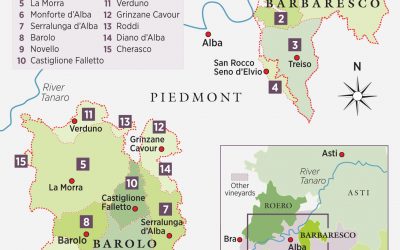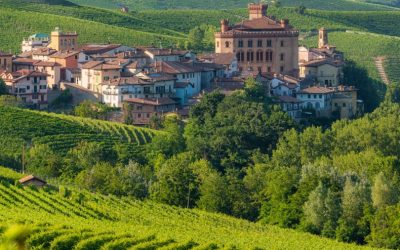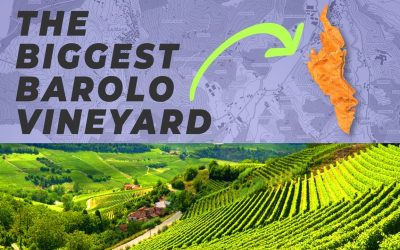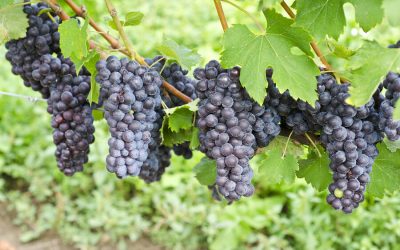Barolo King of Wines and the Wine of Kings
Barolo, often dubbed as the “King of Wines and the Wine of Kings”, stands as a symbol of the rich viticultural heritage of the Piedmont region in northern Italy. Made exclusively from the Nebbiolo grape, this robust red wine is adored for its full-bodied nature, intoxicating aromas of tar and roses, and an extraordinary aging potential. As we embark on this journey of exploring the “BarPòP King of Wines”, we delve into more than just a wine – we immerse ourselves in a royal experience that reflects centuries of tradition, the richness of Piedmontese terroir, and the passion of generations of vintners.
Summary Table:
| Aspect | Detail |
|---|---|
| Origin of the Moniker | The moniker originates from the historic appreciation of Barolo by the House of Savoy, the royal family that once ruled the Kingdom of Italy. |
| Nebbiolo Grape | The backbone of Barolo, the Nebbiolo grape is known for its high tannins and acidity, as well as its distinct aroma of tar and roses. |
| DOCG Status | Barolo is a Denominazione di Origine Controllata e Garantita (DOCG) wine, indicating its production is strictly regulated to ensure quality and authenticity. |
| Key Regulations | Barolo must be made 100% from Nebbiolo grapes, aged for a minimum of 38 months (62 for Riserva), and have a minimum alcohol content of 13%. |
| Tasting Profile | Barolo is highly tannic and acidic, with flavors that can range from cherries, berries, and forest fruits to leather, anise, rose, and even tar. |
| Pairing Suggestions | Barolo pairs well with rich foods like truffle-based dishes, red meats, heavy pastas, and strong cheeses due to its high tannins and acidity. |
Barolo: The Historic Journey of the King of Wines and the Wine of Kings
The origin of Barolo’s regal nickname traces back to the 19th century when it found favor with the House of Savoy, the ruling royal family of Italy. Count Camillo Benso di Cavour, a leading figure in the Italian unification and the then mayor of Grinzane Cavour, wanted to improve the quality of local wines. He invited the French enologist Louis Oudart to Piedmont, whose techniques revolutionized winemaking in the region and ultimately led to the creation of the Barolo we know today.
Impressed by its quality, the royal family began serving Barolo at court, and its reputation quickly spread. This association with royalty helped elevate Barolo’s status, solidifying its reputation as one of Italy’s – and the world’s – most esteemed wines.
King of Wines and the Wine of Kings
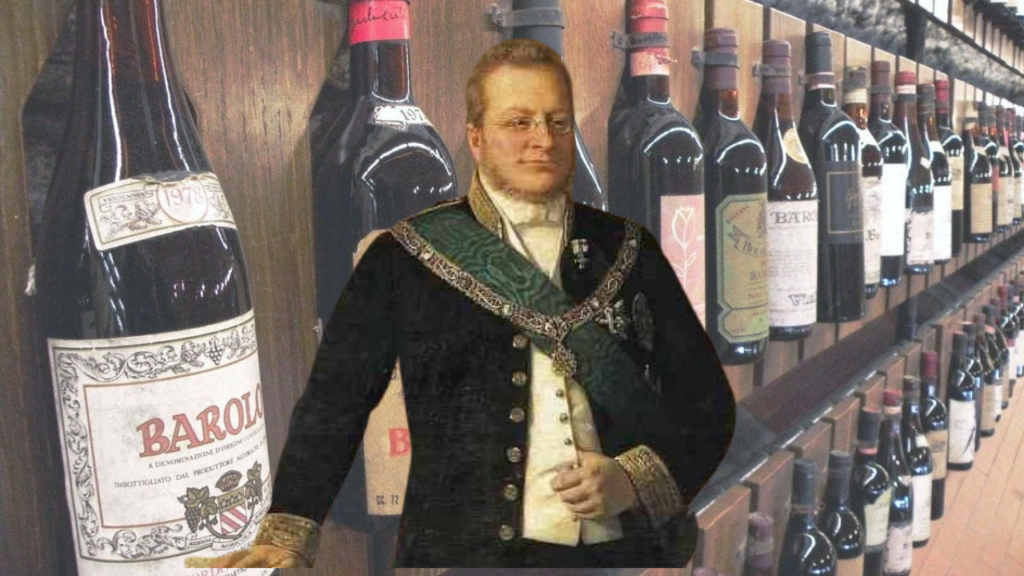
Barolo, renowned as the “king of wines and the wine of kings,” originates from the picturesque region of Piedmont in northwest Italy. This noble red wine, made from the Nebbiolo grape, is known for its deep red color, rich complexity, and the potential for long aging. Barolo’s high acclaim and royal association have long been acknowledged since the times it graced the tables of the House of Savoy, marking its historical prestige.
In a similar vein, Cabernet Sauvignon, often referred to as the king of red wines, is one of the world’s most widely recognized red wine grape varieties. It is grown in nearly every major wine-producing country and is celebrated for its depth of flavor, ability to age, and its ability to thrive in a variety of climates. This full-bodied wine offers a fascinating contrast to the more delicate Nebbiolo grape, offering robust flavors of blackcurrant, plum, and cedar, and typically aging in oak to add a layer of complexity.
Tokaj, the Hungarian counterpart, has had its share of royal acclaim. The sweet, botrytized wines of Tokaj were lauded by King Louis XIV of France as “The King of wines, the wine of Kings,” and were cherished among European royalty and elite. The Tokaj wine region in Hungary is renowned for its unique volcanic soil and grape varieties like Furmint and Hárslevelű, which contribute to the distinctive flavor profile of its world-renowned dessert wines.
While all three wines — Barolo, Cabernet Sauvignon, and Tokaj — are different in style, grape variety, and terroir, they share a commonality in their high esteem and historical association with nobility. Each offers a distinct tasting experience: Barolo with its austere elegance and ability to convey its terroir, Cabernet Sauvignon with its bold flavors and widespread adaptability, and Tokaj with its sweetness, high acidity, and unique botrytized character. Regardless of these differences, all three demonstrate the versatility and richness of the world of wine, each reigning supreme in their own right.
Production and Classification of Barolo 🍇
Barolo wines are produced in the Langhe hills surrounding the town of Barolo, within the larger Piedmont wine region. The designation of “Barolo” is strictly controlled by the Denominazione di Origine Controllata e Garantita (DOCG), ensuring adherence to traditional winemaking methods and specific geographical boundaries. Each bottle of Barolo tells a story of its unique “cru”, or vineyard site, from which the Nebbiolo grapes are sourced.
DOCG Status and Regulation 📜
Barolo is a Denominazione di Origine Controllata e Garantita (DOCG) wine, indicating its production is regulated under the highest Italian wine standard. This stringent classification ensures that every bottle of Barolo maintains its regal standard. Key regulations include that Barolo must be made 100% from Nebbiolo grapes, aged for a minimum of 38 months (of which 18 must be in wooden barrels), and have a minimum alcohol content of 13%.
The Noble Nebbiolo Grape 🍇
Central to Barolo’s prestige is the Nebbiolo grape, a varietal known for its high tannins and acidity, as well as its unique aroma profile, often described as “tar and roses.” It’s a capricious grape, sensitive to the environment and notoriously difficult to cultivate outside of its native Piedmont. But when handled correctly, Nebbiolo produces wines with a depth and complexity few other varietals can achieve – making it truly worthy of the “king” title.
Characteristics of Barolo 🍷
Barolo exhibits a unique combination of power and elegance, characterized by deep garnet hues, high acidity, and potent tannins. Aromas and flavors vary with aging, ranging from fruits like cherries and plums when young, to more complex notes of leather, tar, and dried roses as it matures. The characteristic bouquet, often described as ‘tar and roses’, is a distinguishing factor of Barolo wines. Discover the best Barolo Vintage.
Winemakers vs Sommelier: Blind tasting in the Barolo valley @Revello winery

At Revello Winery, nestled in the scenic hills of the Barolo region, an exciting event was set: a blind tasting showdown between the winemakers and a sommelier. Each group brought a wealth of knowledge and a discerning palate to the table. But would the winemakers’ intimate knowledge of the vineyards and wine production have the upper hand, or would the sommelier’s extensive training in wine identification and service carry the day?
The Blind Tasting Challenge 🔍🍷
Blind tasting is a method of tasting wines without any prior knowledge about them. The bottles are often wrapped in cloth or placed in bags to hide their labels, forcing tasters to rely solely on their senses and expertise to identify the wine’s varietal, origin, and even vintage.
In this challenge, both groups were presented with several wines from the Revello winery’s own collection as well as other prominent Barolo producers. These included a range of vintages and Crus, all embodying the unique terroir and diverse expressions that make Barolo so revered.
The King’s Tasting Profile 👑
A glass of Barolo offers a sensory experience fit for a king. It’s high in tannins and acidity, providing a powerful structure that enables it to age gracefully. On the palate, Barolo can exhibit a broad range of flavors, from cherries, berries, and forest fruits to leather, anise, and dried herbs. With age, these notes can evolve into complex tertiary aromas, including truffle, licorice, and tobacco.
In summary, the moniker “King of Wines and the Wine of Kings” encapsulates the rich history, noble grape, stringent production regulations, and distinguished tasting profile that define Barolo. It is not just a wine, but a testament to Italy’s winemaking heritage and a fitting tribute to the regal pedigree of its past. Long may the king reign!
Food Pairings with Barolo 🍽️
Barolo, with its bold character, pairs exceptionally well with rich, hearty dishes. Traditional Piedmontese cuisine, such as truffle-infused pasta, braised beef, and game meat, harmonizes splendidly with Barolo’s robust profile. Cheese, especially aged varieties, also make an excellent pairing.
The Prestigious Vineyards of Barolo 🌄
The Langhe hills of Barolo are home to numerous esteemed vineyards or “crus”, each lending a distinct character to the wines they produce. Among these, the Cannubi, Sori San Lorenzo, and Brunate vineyards stand out for their superior quality Nebbiolo grapes, contributing to the creation of world-class Barolo wines.
Aging and Storing Barolo 🏺
Given its high tannin content and acidity, Barolo benefits greatly from extended aging. Most Barolos start to mature after about 10 years and can continue to develop for several decades under optimal storage conditions. When storing Barolo, ensure a constant temperature, limited light exposure, and adequate humidity.
Conclusion 🎉
Barolo, the “King of Wines and the Wine of Kings”, is a testament to the winemaking prowess of Piedmont. It’s more than a wine – it’s a narrative of a rich history, a celebration of tradition, and a beacon of Italian viticulture. Whether you’re a seasoned wine connoisseur or a budding enthusiast, the allure of Barolo, the BarPòP King of Wines, is simply irresistible.
